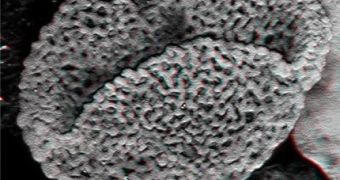Scientists working with the University of Zürich say that, according to evidence at hand, the world's first flowering plants evolved some 100 million years earlier than previously believed.
This means that, all things considered, flowers had probably been around for quite a while at the time when the first dinosaurs walked the Earth.
The researchers base their claims on fossilized pollen grains that have recently been unearthed in Switzerland.
They say that, unlike leaves and flowers, pollen grains are both fairly numerous and more robust. Hence the fact that they are the plant bits that more often than not get fossilized and can therefore help researchers collect information concerning the makeup of ancient ecosystems.
Investigations carried out thus far have revealed that these pollen grains are roughly 240 million years old. This means that, rather than emerging in the Early Cretaceous, flowering plants first appeared on our planet in the Early Triassic, maybe even earlier.
“We believe that even highly cautious scientists will now be convinced that flowering plants evolved long before the Cretaceous,” explained Peter Hochuli with the University of Zürich.
“Flowering plants were the last group of plants appearing in Earth's history. They are an extremely successful group on which all terrestrial ecosystems today depend, including the existence of humanity,” the researcher went on to argue, as cited by Live Science.
By the looks of it, the pollen grains discovered in Switzerland came from six different types of plants. Therefore, specialists suspect that, contrary to expectations, flowering plants that grew in the Early Triassic were quite diverse.
Since bees did not evolve for at least another 100 million years, odds are that beetles were the ones in charge of pollinating them.
For the time being, researchers cannot say from which plants these flowering ones evolved. However, they believe that they were related to conifers, ginkgos, cycads, and seed ferns.

 14 DAY TRIAL //
14 DAY TRIAL //